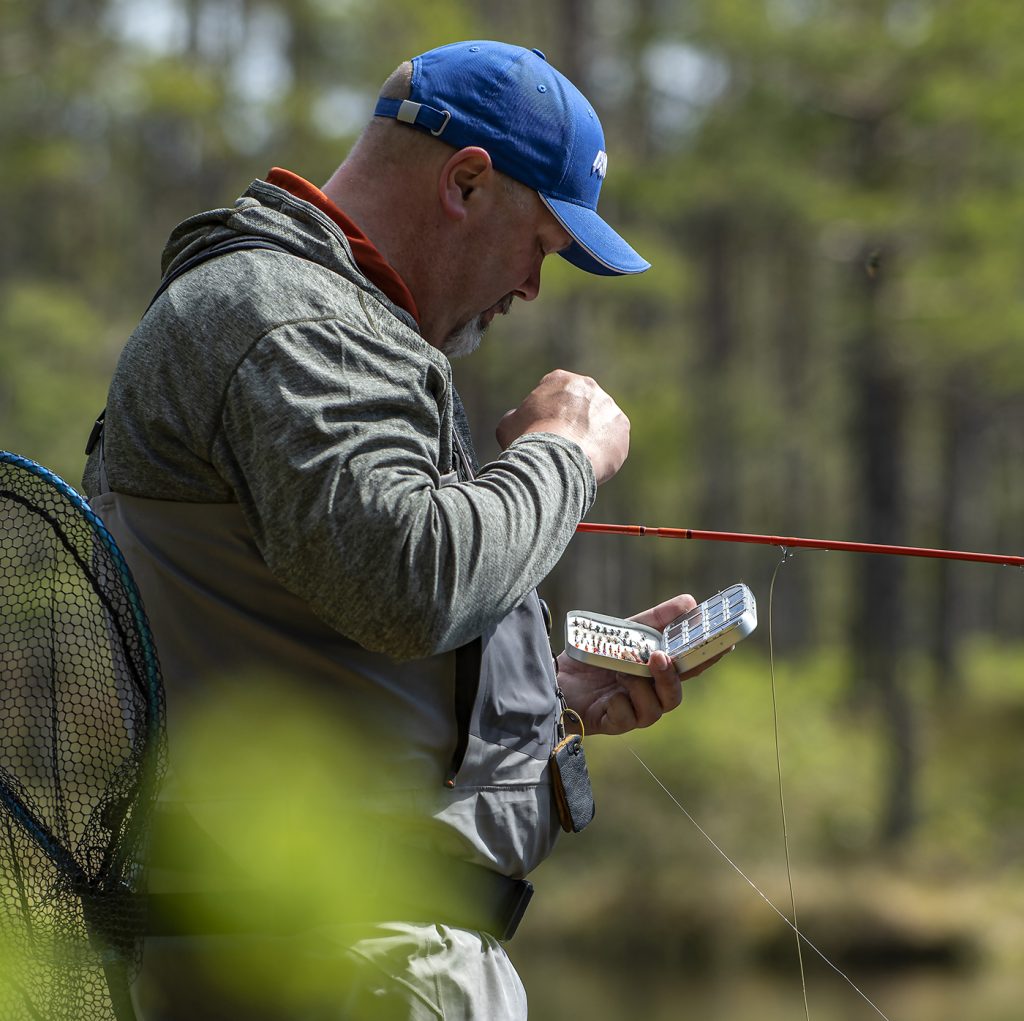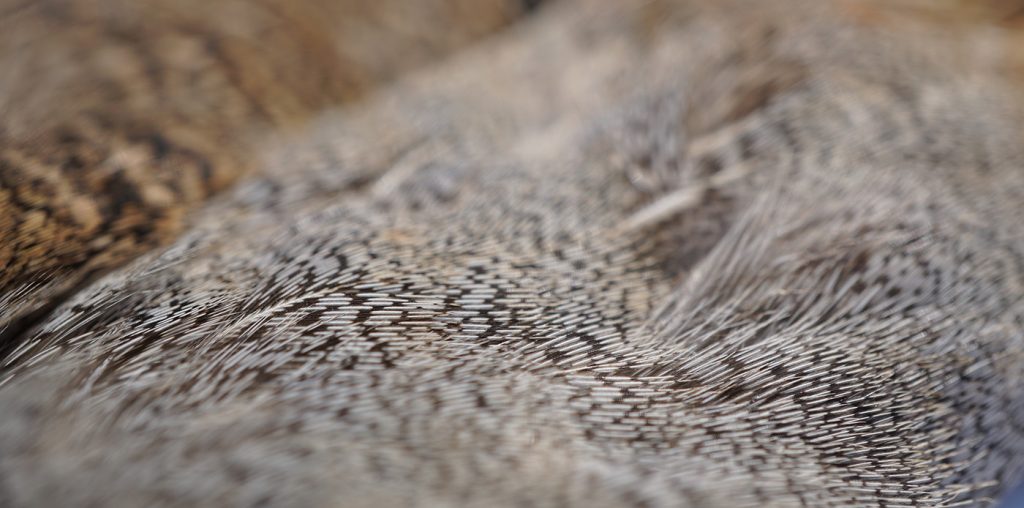
It may seem convenient to buy loose feathers in a bag, instead to buy a whole hide. But if you go through what’s in the bag and sort the feathers, you discover that the percentage of usable feathers is often quite low and not infrequently you end up without the feather you needed. Of course there is a higher price for a whole skin compared to a bag of feathers, but a whole skin has so many benefits that outweigh the investment.
This artickel is written by Håkan Karsnäser.
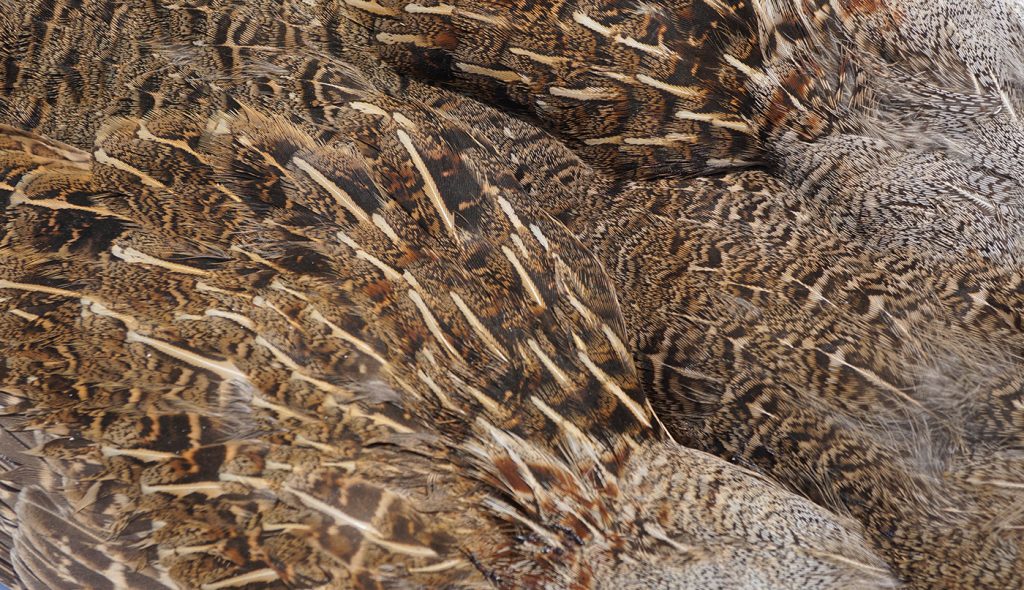
Firstly, you have all the feathers gathered in one place and it is easy to get an overview of which feathers are available. In addition, all feathers in all sizes can be found on one skin. This is especially true if you are looking for really small feathers for the smallest flies. Then there is also the possibility of finding new feathers that you didn’t know existed and can thus compose new patterns and fly types.
One of the most useful skins for fly tying is undoubtedly the English Partridge. It is also sold under the name Hungarian partridge, but it is the same bird. This bird should not be confused with the French partridge, which is a completely different bird and whose feathers have a completely different pattern and texture. Partridge chop included in a variety of bow ties, both classic wet flies and nymphs, but also modern hatchers and soft chopped flies.

The beautiful feathers from the French Partrige.
However, there is a great deal of difference between the drawing, color and size of the body feathers, depending on where you pick them from the hide. For the classic fly Partridge & Orange are the distinctively marked feathers from the bird’s chest to be used. These feathers are marked almost in black and white, as a grizzly hackle and they give the fly its proper appearance. However, the stems of these feathers are quite stiff, so they can be a bit difficult to wind if you are not careful.
Along the bird’s back there are feathers that are more brown speckled in the marking and these are perfect as hackle on nymphs, hatching insects and pupaes. They also have very thin stems and are very easy to wrap. Here it is really an advantage to have a skin to choose feathers from, as they differ quite a lot in size. Just at the height of the wing mount, the feathers have rather short fibers, for the smallest flies, and the further back towards the tail the feathers become larger and the fibers longer. These large feathers are perfect for sea trout flies, as they also have really thin and soft fibers.
If you tie extremely small soft hackled flies, it is the feathers at the top of the neck and head that you are looking for. This is the feathers that you would never find in a bag of loose partridge feathers. If you are really lucky and find a good quality skin, there are feathers for soft hackled flies down to size 20-22.

Now it’s not just the body feathers that are useful. On the wings you will find feathers with material for wings on them March Brown and other types of clasic styled wet flies in the smaller sizes. In addition, there are smaller feathers with slightly stiffer stems on the wings that I use as wings on my big caddis imitations. Under the wings, behind the tail, there are a number of lighter feathers that are extremely soft, almost like chickabou and they can be used for the same purpose. Fibers from these feathers are perfect as a tail or hackle on small Wolly Buggers and similar soft flies.
Here Christian Krogh is demonstrating the use of partridge feathers in a matuka for his coastal fishing.
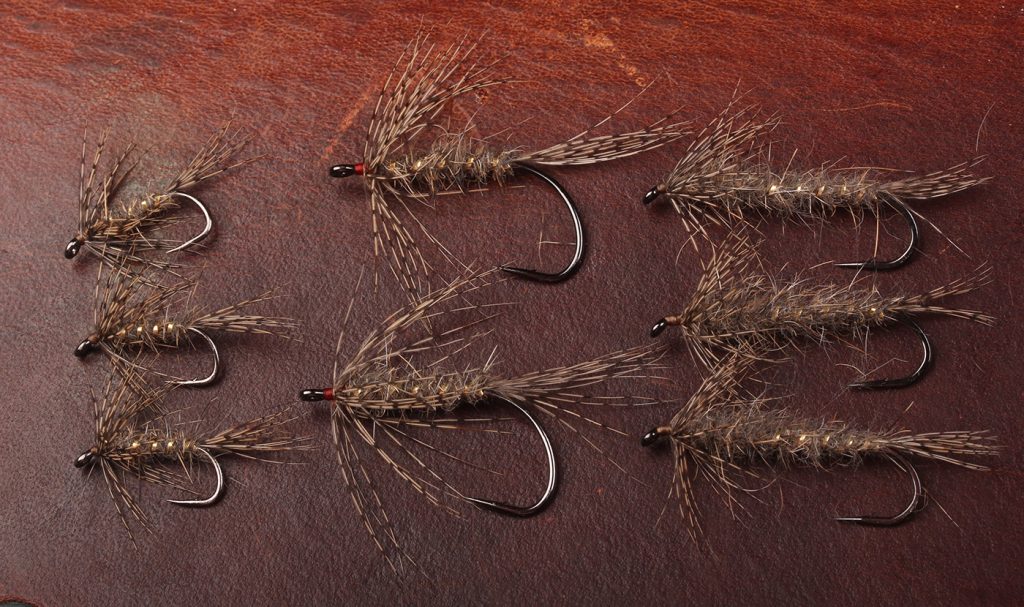
Here comes a tying description for a simple fly tied with hackle and tailfeather from a partridge, and which can be tied in all sizes to imitate various insects or prey and can thus be used for fishing for trout, grayling and rainbow trout, but also for coastal fishing for sea trout
Partridge Flymph
Hook: Ahrex FW562 # 12
Thread: Brown 8/0
Tail: Partridge fibres
Rib: flat thin gold tinsel
Body: Hares ear dubbing
Hackel: Partridge

Attach the wire behind the eye and pick out a partridge hackle. The fibres must be similar to the hook shaft. Clear away the fluffy part at the bottom and attach in, with the concave side up and the tip forward over the hook eye.
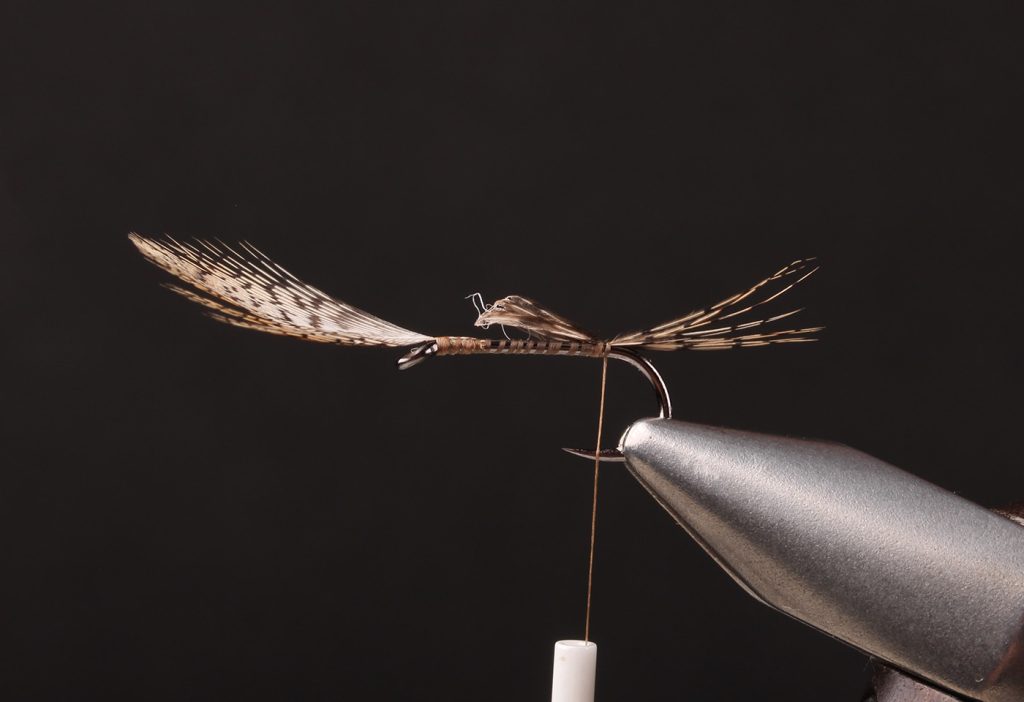
Wrap the back wire to the hook bend. Tear off some fibres from a partridge hackle and attach as a tail.
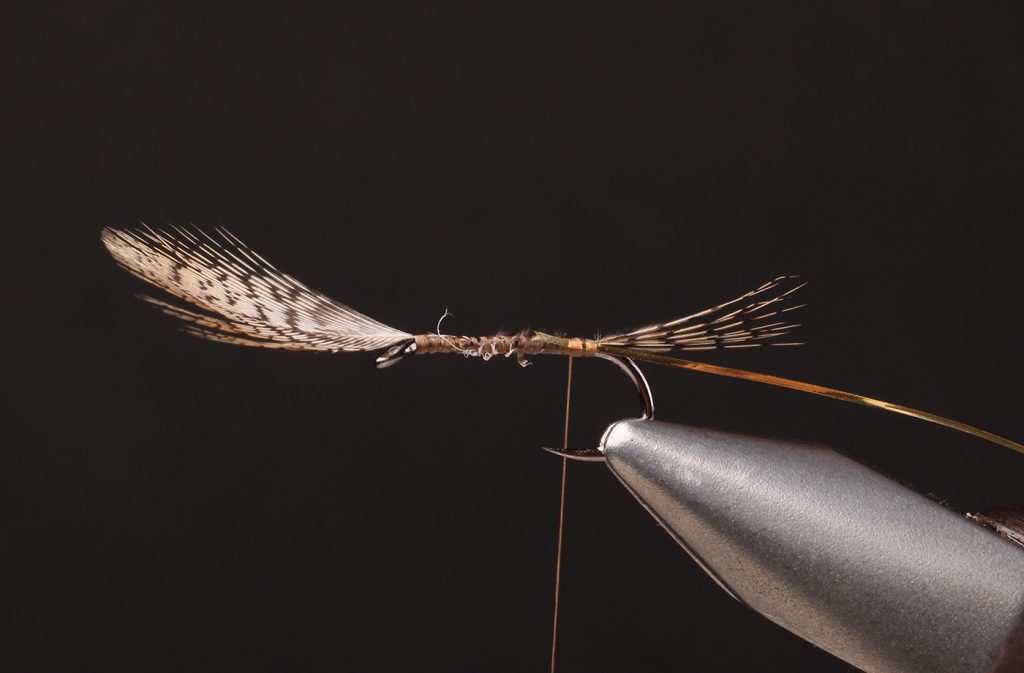
Cut off a piece of flat gold tinsel and attach next to the tail.
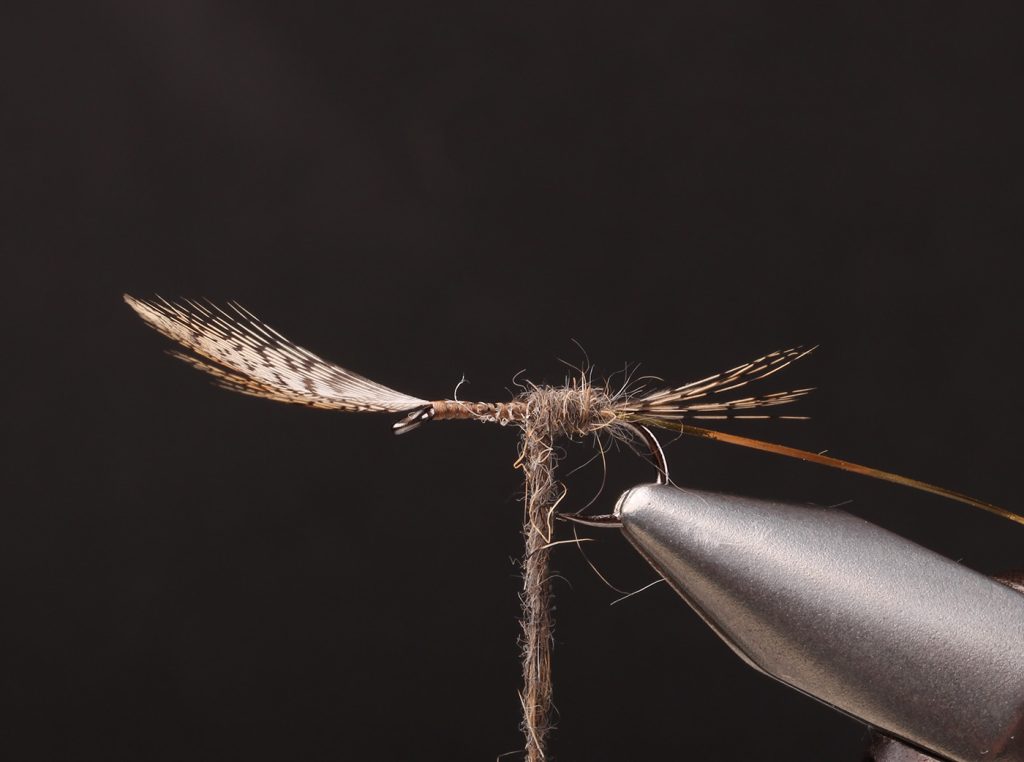
Dub the thread thinly with hares ear dubbing and wrap a smooth, thin body.
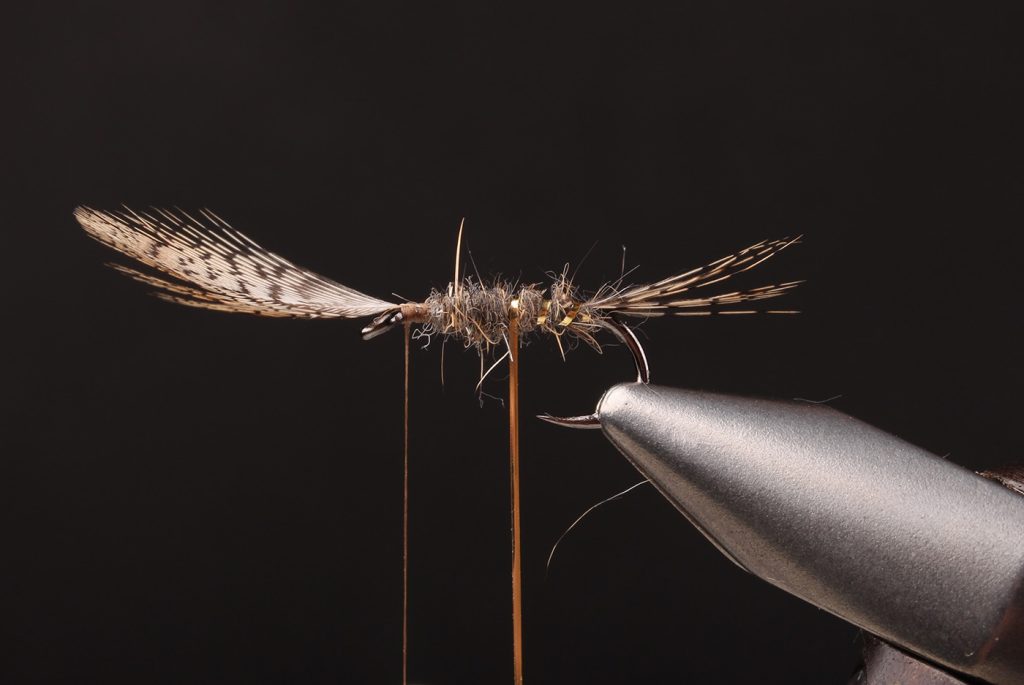
Cross wrap the tinsel over the body in even turns until the hackle. Attach and cut off.
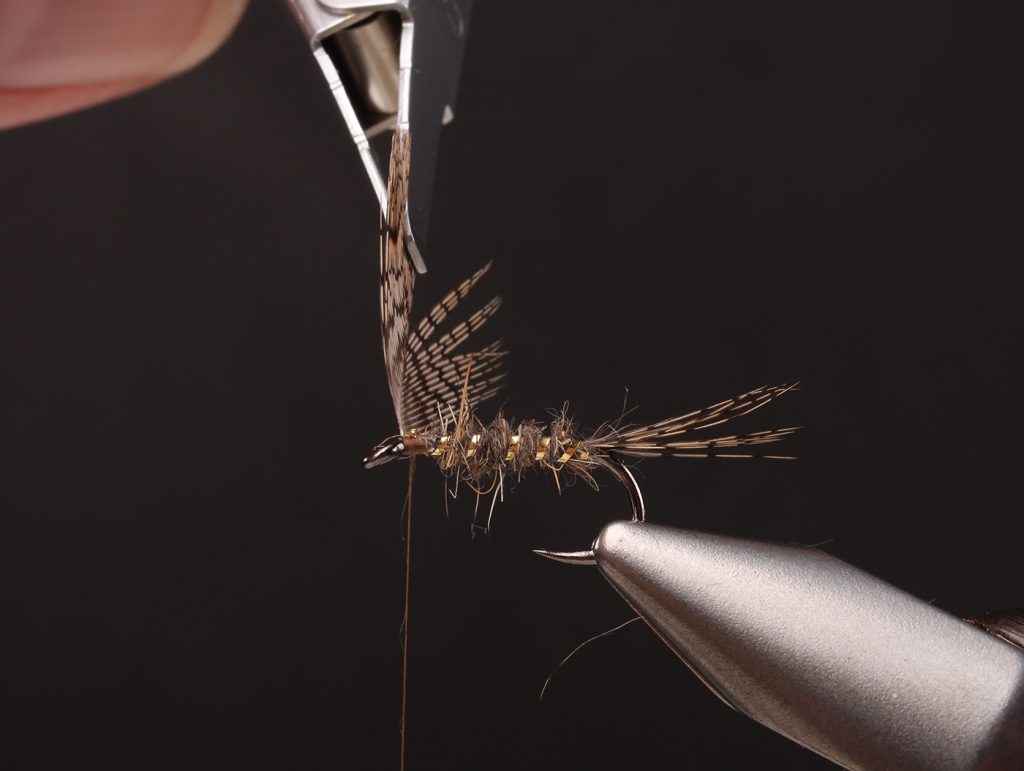
Pinch the tip of the hackle in a hackle pliers and wrap the hackle backwards 2 turns.
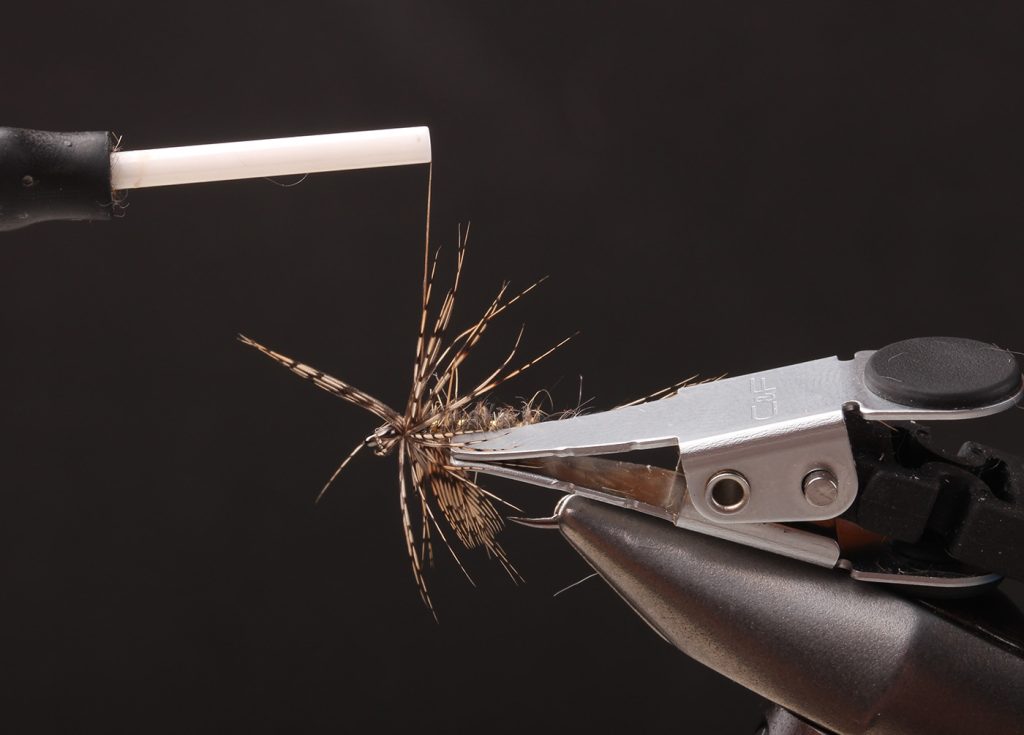
Attach the hackle with the wire and wind the wire through the hackle up to the eye of the hook.
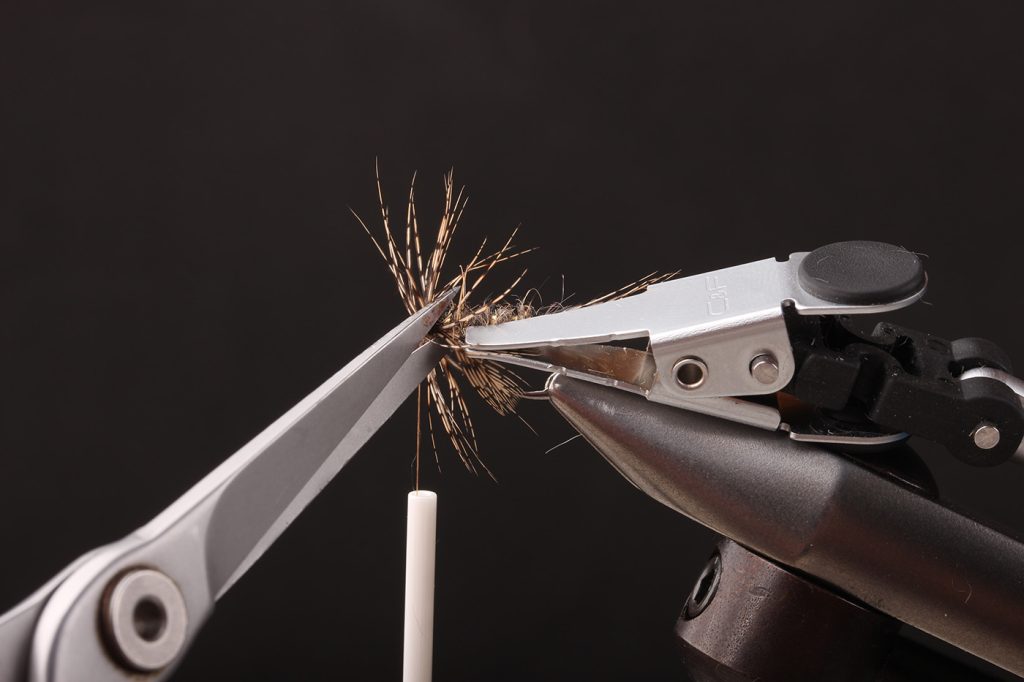
Cut off the tip of the hackle.
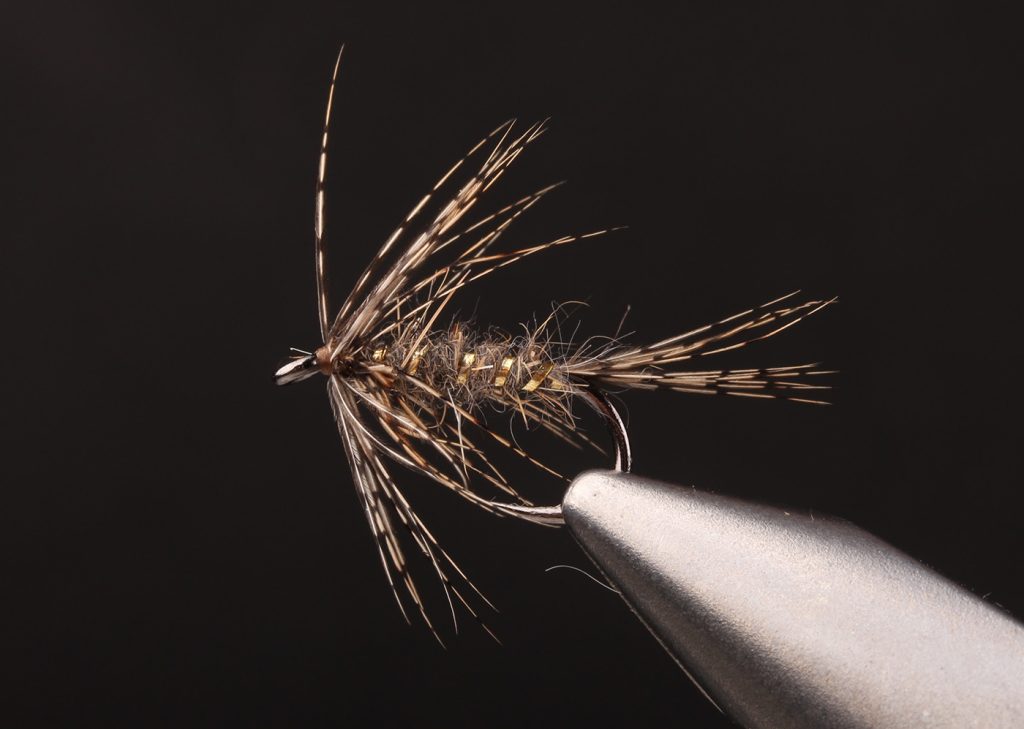
Make a small head in front of the hacklet, but do not tie down the hackle fibers. Finish with whipfinish.
